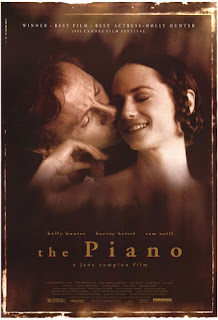November 21st: THE STRANGER (Orson Welles, 1946)
NOTE: This film will be projected in the high-definition Blu-ray format.
In the aftermath of World War II, a government investigator searches for a Nazi fugitive in a small town.
After the artistic triumph of his debut feature Citizen Kane, Orson Welles repeatedly found difficulty bringing his ideas to the screen intact, with the studio drastically cutting and reshooting its follow-up The Magnificent Ambersons, and the cutting of funding for his Latin American documentary It's All True. By 1946, he was ready to concede power in order to keep working behind the camera.
Independent producer Sam Spiegel bought the rights to a story, and had a screenplay written by Anthony Veiller and his oft-uncredited partner John Huston (The Maltese Falcon). Spiegel wanted Huston to direct, but the latter was currently under obligation to the U.S. Army making documentaries. Welles had been cast in the lead role already, and offered his services as director, Spiegel accepting under strict conditions of editing rights and budgetary constraints.
Welles rewrite of the script attempted to make it a more personal, idiosyncratic film, but before cameras even rolled, Spiegel's harsh editor Ernest J. Nims removed 32 pages from the screenplay. He was stymied again after attempting to cast his frequent collaborator Agnes Moorehead in the other lear role, but Spiegel insisted on Edward G. Robinson (Double Indemnity). Welles had better luck with the crew, drafting cinematographer Russell Metty, as well as his Citizen Kane production designer Perry Ferguson.
Ferguson built an impressive town square on the Universal lot, complete with a 124-foot tall church steeple. Welles used windows and their reflections to show off the depth of his sets and render the setting more authentic. There are a fair amount of choreographed crane shots as well as long takes, theoretically to make it harder for shots to be altered or removed.
While the film contains impressive set pieces, particularly the action in the opening sequence and the climactic fight in the clock tower, Welles is clearly delighted with depicting the mundane activities of the townspeople, particularly in the local drugstore, expanding the role of its proprietor played by Vaudevillian actor Billy House.
The film was completed early and under budget, Welles proving he could play the Hollywood game as well as any other hired gun. Regardless, his original running time of 115 minutes was still cut down to 95, much of the removed material coming from the film's extended espionage beginning, as well as dream sequences involving co-star Loretta Young. The film received mostly positive reviews, and would wind up being Welles's only film to earn a profit.
In the aftermath of World War II, a government investigator searches for a Nazi fugitive in a small town.
After the artistic triumph of his debut feature Citizen Kane, Orson Welles repeatedly found difficulty bringing his ideas to the screen intact, with the studio drastically cutting and reshooting its follow-up The Magnificent Ambersons, and the cutting of funding for his Latin American documentary It's All True. By 1946, he was ready to concede power in order to keep working behind the camera.
Independent producer Sam Spiegel bought the rights to a story, and had a screenplay written by Anthony Veiller and his oft-uncredited partner John Huston (The Maltese Falcon). Spiegel wanted Huston to direct, but the latter was currently under obligation to the U.S. Army making documentaries. Welles had been cast in the lead role already, and offered his services as director, Spiegel accepting under strict conditions of editing rights and budgetary constraints.
Welles rewrite of the script attempted to make it a more personal, idiosyncratic film, but before cameras even rolled, Spiegel's harsh editor Ernest J. Nims removed 32 pages from the screenplay. He was stymied again after attempting to cast his frequent collaborator Agnes Moorehead in the other lear role, but Spiegel insisted on Edward G. Robinson (Double Indemnity). Welles had better luck with the crew, drafting cinematographer Russell Metty, as well as his Citizen Kane production designer Perry Ferguson.
Ferguson built an impressive town square on the Universal lot, complete with a 124-foot tall church steeple. Welles used windows and their reflections to show off the depth of his sets and render the setting more authentic. There are a fair amount of choreographed crane shots as well as long takes, theoretically to make it harder for shots to be altered or removed.
While the film contains impressive set pieces, particularly the action in the opening sequence and the climactic fight in the clock tower, Welles is clearly delighted with depicting the mundane activities of the townspeople, particularly in the local drugstore, expanding the role of its proprietor played by Vaudevillian actor Billy House.
The film was completed early and under budget, Welles proving he could play the Hollywood game as well as any other hired gun. Regardless, his original running time of 115 minutes was still cut down to 95, much of the removed material coming from the film's extended espionage beginning, as well as dream sequences involving co-star Loretta Young. The film received mostly positive reviews, and would wind up being Welles's only film to earn a profit.










Comments
Post a Comment